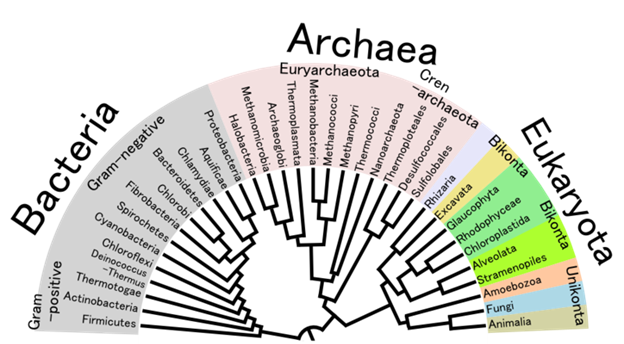Taxonomic Classification of Amanita phalloides

All of the organisms within the domain Eukarya are multicellular. Members of this group also have a true nucleus and membrane bound organelles. Every organism within this domain shares these traits. Another example of an organism in this domain is the Capra hircus, or the domestic goat. Want to see one more? Check out the Enteroctopus dofleini or Giant Pacific Octopus.
Kingdom: Fungi
All fungi all heterotrophs, and obtain their nutrients through absorption. Fungi can range from microscopic to multiple acres in length. Two other types of fungi are saprophytic which means they excrete enzymes to help break down their food externally and so it is easier to absorb. The other type is parasitic fungi which means they obtain food from other organisms in a parasitic fashion. Fungi's cell walls are all made of chitin instead of cellulose like plants. A final trait of the fungi is that in their lifespan, there is an alternation of generations. This means that the individual fungi experiences diploid and haploid phases throughout the lifespan. If interested in the Fungi, go on and check out the Jelly Ear Fungus! Or maybe the Chanterelle mushroom!
Phylum: Basidiomycota
Within this phylum of fungi most identifiable characteristics are close to none. The basidiomycota are very diverse in all aspects, including different cellularity like multicellular or unicellular. The major defining trait that separates these fungus from others is the production of the basidium or basidia if used in plurality. These basidia produce sexual spores that are used to create more basidiomycota. Secondly, this group possesses the ability for plasmogamy and karyoogamy. These two forms of sexual processes occur in fungi of opposite mating types. Plasmogamy is the process in which the hyphae walls fuse together allowing them to coexist while karyogamy is when the nuclei of the fungi fuse together to create one. To see another example of a Basidiomycete, check out the Split-Gilled Fungus! Another example of a basdidiomycete, the Lingzhi Mushroom!
Class: Agaricomycetes
In the class Agaricomycetes, the defining feature is to produce mushrooms which are obviously the most recognizable trait of the fungi in general. On top of this great feaure, the Agaricomycetes area also some of the most edible fungi ranging from shiitake to button mushrooms. The functions of this group include breaking down decaying material, being dangerous as multiple pathogenic species and parasitic to a multitude of other organisms. But this group has also been known to be useful for many medicinal purposes as well.
Order: Agaricales
The order Agaricales has simple blueprints for the basidiomycota fungi in this order. Every fungus within this group has a very poisonous and deadly stalk that supports the fungus. Radiati
 ng off of this stalk
comes the cap with gills underneath, folded for surface area.
ng off of this stalk
comes the cap with gills underneath, folded for surface area.
Family: Amanitaceae
Mostly a poisonous family with powerful enough poison that only a transplant of the liver could save you, these mushrooms are particularly easy to find and some are best tasting mushrooms on the planet. Although sometime difficult to separate one species from the other this family is very diverse and adds much variety to fungi as a whole.
Genus: Amanita
The fungi in the genus Amanita became worldwide famous because of their poisonous qualities and are easily identified by their gills, not attached to their stem. The gills are always pale white in color but some species are difficult to discern from each other. The identification process begins at the stem because the stem shows the most difference in most species. Amanita also possess a ring on the stem which indicates that the fungus is more closely related to the Amanita than other fungi you may find.
Species: Amanita phalloides
Most mycologists call this mushroom a beautiful specimen because of its pure whiteness of the fungus from its volva to the white cap. Unfortunately, specimens that have been aged or kept around for a while have a distinct odor to them that is unpleasant to inhale. The most interesting part of this organism is the mycorrhizal relationship with most oak trees along with other trees. This fungus is also found across many parts of the globe including Britain, Ireland North America and some parts of North Africa. The naming of this organism comes from the latin word phalloides which translates to "phallus-shaped." The name came from Sebastien Vaillant.

<--Go back Home On to Habitat-->